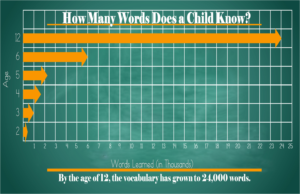Over the course of the past two decades or so, reading scientists have settled the fundamental questions about reading: What is it? How do we learn it? How should it be taught? Our program for teaching reading, 7SS2R aligns with the science of reading.
By now you know we believe that everyone needs to be able to read with proficiency. And we think everyone can! Proficiency means reading with comfort, comprehension, and appropriate speed. Reading proficiency is the cornerstone of academic success. A student who is not a proficient reader will struggle in school and consistently fall behind. They will get further behind each year.
Educators and administrators know that achieving reading proficiency by the fourth grade is critical. Nevertheless, about two-thirds of our fourth graders are not proficient readers. This statistic has not significantly improved since 1990. That is when testing by the National Assessment for Educational Progress (NAEP) began. Research by reading scientists suggest that we can alter this reality, but we need to change the way we teach reading.
Let’s break this down.
What is the process of reading?
Mark Seidenberg, a cognitive neuroscientist at the University of Wisconsin. He has been studying reading for several decades. In his book, Language at the Speed of Sight, he describes reading as the ability to decode print as a representation of speech. Seidenberg asserts, “We hear words when we read.”
It is his conclusion that a skilled reader has integrated written and spoken language at a neural level. “Skilled reading is a specialized type of expertise that only some people possess. It includes the necessary expertise includes the “ability to recognize a large vocabulary of printed words quickly and accurately, including academic vocabulary and the ability to recognize lapses in comprehension and perform simple repairs.”
So, at its basic level, reading is the process of decoding, or “translating,” written words into spoken words. The purpose of this is to be able to comprehend their meaning. Writing, which Seidenberg refers to as “the first information technology,” is the process in reverse. It seems safe to say, then, that the success or failure of a teaching method must focus on this integration of writing and speech. 7SS2R aligns with this requirement.
What are the crucial skills of reading that 7SS2R teaches?

Reading scientists agree that there are 5 foundational skills for reading well. Anyone, of any ages, at any reading level, can improve as long as the teaching method provides instruction for the development of all five foundational skills. 7 Sound Steps to Reading focuses on these 5 building blocks of proficiency: phonemic awareness, phonics, vocabulary, fluency, and comprehension.
Perhaps we should define our terms:
-
- Phonemic awareness—it is the understanding that there is a relationship between the alphabetic symbols and certain sounds. A person who has developed phonemic awareness can hear, identify, and manipulate individual sounds in spoken words.
- Phonics—it is often defined as a method of teaching reading in an alphabetic language, such as English, Arabic, or Greek. However, we call it a system of rules and definitions that creates an almost perfect relationship between the symbols of the alphabet and the sounds of the spoken language. We say it is “almost perfect” because it is reliable 85% of the time. Taught explicitly, it cements the integration of written language and spoken language. However, it requires some time and effort, and repetition is a requisite tool.
- Vocabulary—for the purpose of reading, a simple definition is the supply of words understood and used by a reader. The more words a student knows, the more skilled their reading will be. However, vocabulary is more complicated than this simple definition, and there are many different estimates of how many words a child knows at any age. We have included one such estimate here.
- Fluency—this is the ability of readers to read effortlessly with meaningful expression appropriate to the meaning of the text. The simplest example is reading a question correctly by a rise in the voice pitch at the end. The test of fluency is, of course, in reading aloud, but science has determined that skill in reading aloud aligns with similar skill in silent reading.
- Comprehension—in reading, this is the act of fully understanding the meaning of the written words. Comprehension is, naturally, the reason we read. We seek information or entertainment from a text. For this to happen, we must comprehend.
Why don’t more students read well?
Surely, there are a variety of reasons for students failure to succeed at reading. However, since about two-thirds of our students are not skilled readers, we must examine our methodology. Mark Seidenberg points to a “profound disconnection between the science of reading and educational practice.”
Furthermore, “the gulf between science and education has been harmful.” Seidenberg goes on to say, “…the methods commonly use to teach children are inconsistent with the basic facts of human cognition and development.” As a result, it is more difficult for children to learn. They inadvertently put children at risk of failure and discriminate against the poor.
Seidenberg describes America as a chronic underachiever. He cites a 2003 study by the NAAL—National Assessment of Adult Literacy, part of the National Center for Education Statistics. The NAAL is the most effective measurement of adult literacy in the U.S. The 2003 study indicated that 93 million Americans over the age of 16 could not read beyond a basic level. Seidenberg summarizes that, “at this level, a person can follow directions for mixing a batch of cake mix but cannot understand a fact sheet about high blood pressure.”
7SS2R Aligns with the Science of Reading Requirements
After the year we’ve had, it is imperative that every student get the chance to succeed. So many are behind. In fact, many attended very little school at all in this academic year.
Improving reading is the first place to focus. Students who do not read well cannot keep up. Adults who do not read well cannot effectively compete in the workforce. As a culture and a country, we cannot afford to continue to ignore our deficiencies.
For this reason, SoundEnglish is developing our free, online program of 7 Sound Steps to Reading, which we call 7SS2R. It is structured and stepwise. The program begins at the beginning with phonemic awareness and phonics and proceeds through the other foundational skills to comprehension.
7SS2R aligns with the science of reading. It can improve the reading of anyone who uses it.

